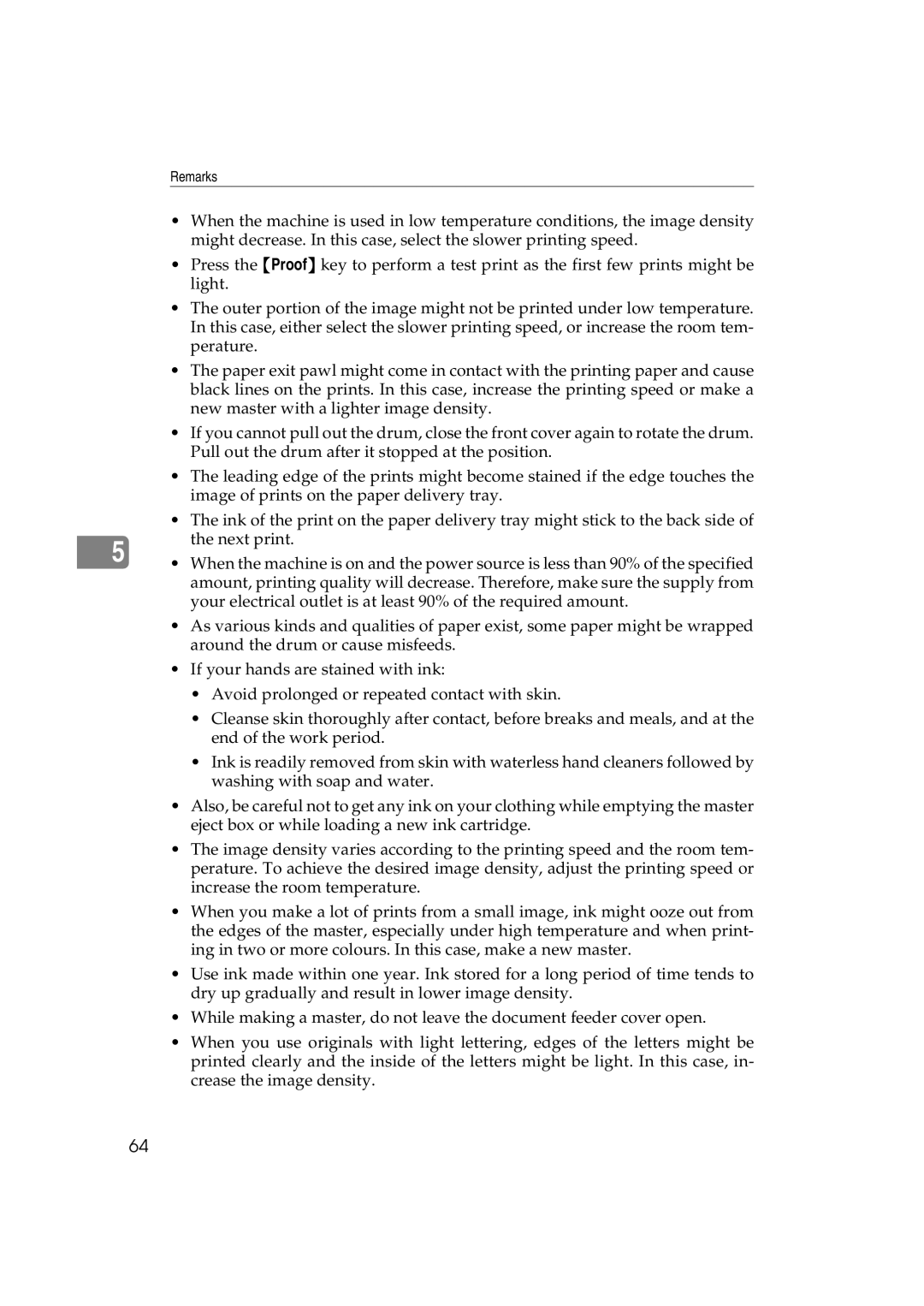
Remarks
• When the machine is used in low temperature conditions, the image density might decrease. In this case, select the slower printing speed.
• Press the {Proof} key to perform a test print as the first few prints might be light.
• The outer portion of the image might not be printed under low temperature. In this case, either select the slower printing speed, or increase the room tem- perature.
• The paper exit pawl might come in contact with the printing paper and cause black lines on the prints. In this case, increase the printing speed or make a new master with a lighter image density.
• If you cannot pull out the drum, close the front cover again to rotate the drum. Pull out the drum after it stopped at the position.
• The leading edge of the prints might become stained if the edge touches the image of prints on the paper delivery tray.
• The ink of the print on the paper delivery tray might stick to the back side of
| the next print. | |
5 | ||
• When the machine is on and the power source is less than 90% of the specified | ||
| ||
| amount, printing quality will decrease. Therefore, make sure the supply from | |
| your electrical outlet is at least 90% of the required amount. |
•As various kinds and qualities of paper exist, some paper might be wrapped around the drum or cause misfeeds.
•If your hands are stained with ink:
•Avoid prolonged or repeated contact with skin.
•Cleanse skin thoroughly after contact, before breaks and meals, and at the end of the work period.
•Ink is readily removed from skin with waterless hand cleaners followed by washing with soap and water.
•Also, be careful not to get any ink on your clothing while emptying the master eject box or while loading a new ink cartridge.
•The image density varies according to the printing speed and the room tem- perature. To achieve the desired image density, adjust the printing speed or increase the room temperature.
•When you make a lot of prints from a small image, ink might ooze out from the edges of the master, especially under high temperature and when print- ing in two or more colours. In this case, make a new master.
•Use ink made within one year. Ink stored for a long period of time tends to dry up gradually and result in lower image density.
•While making a master, do not leave the document feeder cover open.
•When you use originals with light lettering, edges of the letters might be printed clearly and the inside of the letters might be light. In this case, in- crease the image density.
64
